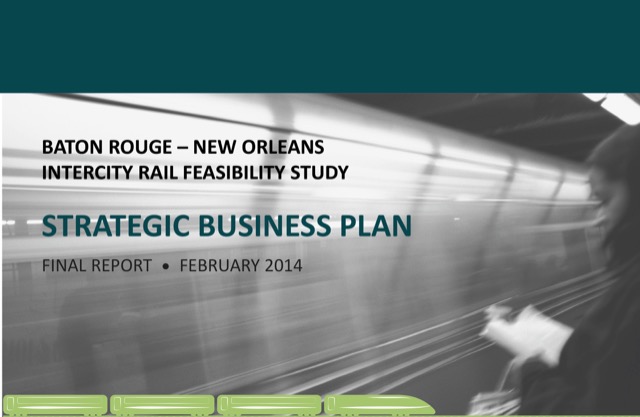States and regions all over the country are developing plans for high-speed or conventional-speed intercity passenger trains. One of the first steps in writing such plans is the “feasibility study.” But the people writing these studies have a curious definition of “feasible.”

Click image to download this business plan. Click here to download technical memoranda behind the plan.
Louisiana Governor John Edwards doesn’t even understand the definition of “light rail.” He asked Secretary of Transportation Anthony Foxx yesterday for federal funding for light rail between New Orleans and Baton Rouge. Or maybe he asked for money for commuter rail; it’s hard to know from the media reports. But Edwards is on the record saying he will do everything he can “to make sure that as soon as possible we can pursue light rail” between the two cities, which are about 80 miles apart on Interstate 10.







